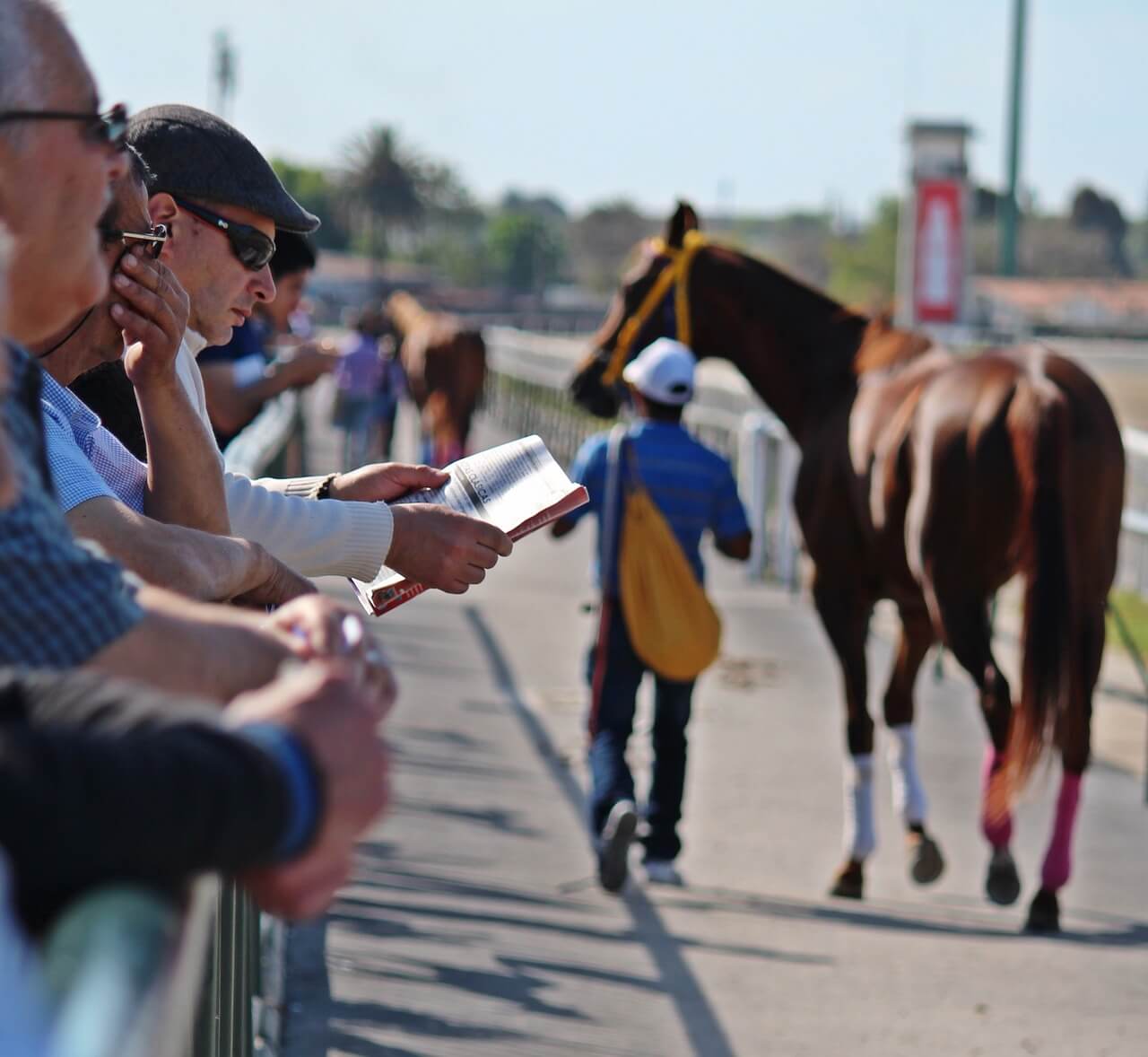The Killing of Juvenile Horses
Every spring, 2-year-old Thoroughbreds are forced to sprint at breakneck speeds in “under tack shows” just to impress prospective buyers and inflate sales prices at auctions. They will never be forced to run this fast again in their future racing careers—if they survive.
Update (March 7, 2024): Billionaire Mike Repole, who has purchased hundreds of top Thoroughbreds and is the founder of the new National Thoroughbred Alliance, agrees with PETA that deadly speed trials must be stopped. Now he’s putting his money where his mouth is: He publicly stated that he won’t be buying 2-year-olds at these sales until the auction companies end the dangerous practice of forcing the horses to run at breakneck speeds.
This Thoroughbred filly was known only as “Hip #130.” She was just 2 years old, and she hadn’t even been given an official racing name yet when she sustained a catastrophic leg injury at the Fasig-Tipton auction in Maryland. She was then administered a lethal injection. A PETA undercover investigator captured the entire sequence on video before a blue screen was put up to try to block the view of the carnage. This unique “behind the screens” perspective exposes how this blood sport operates.
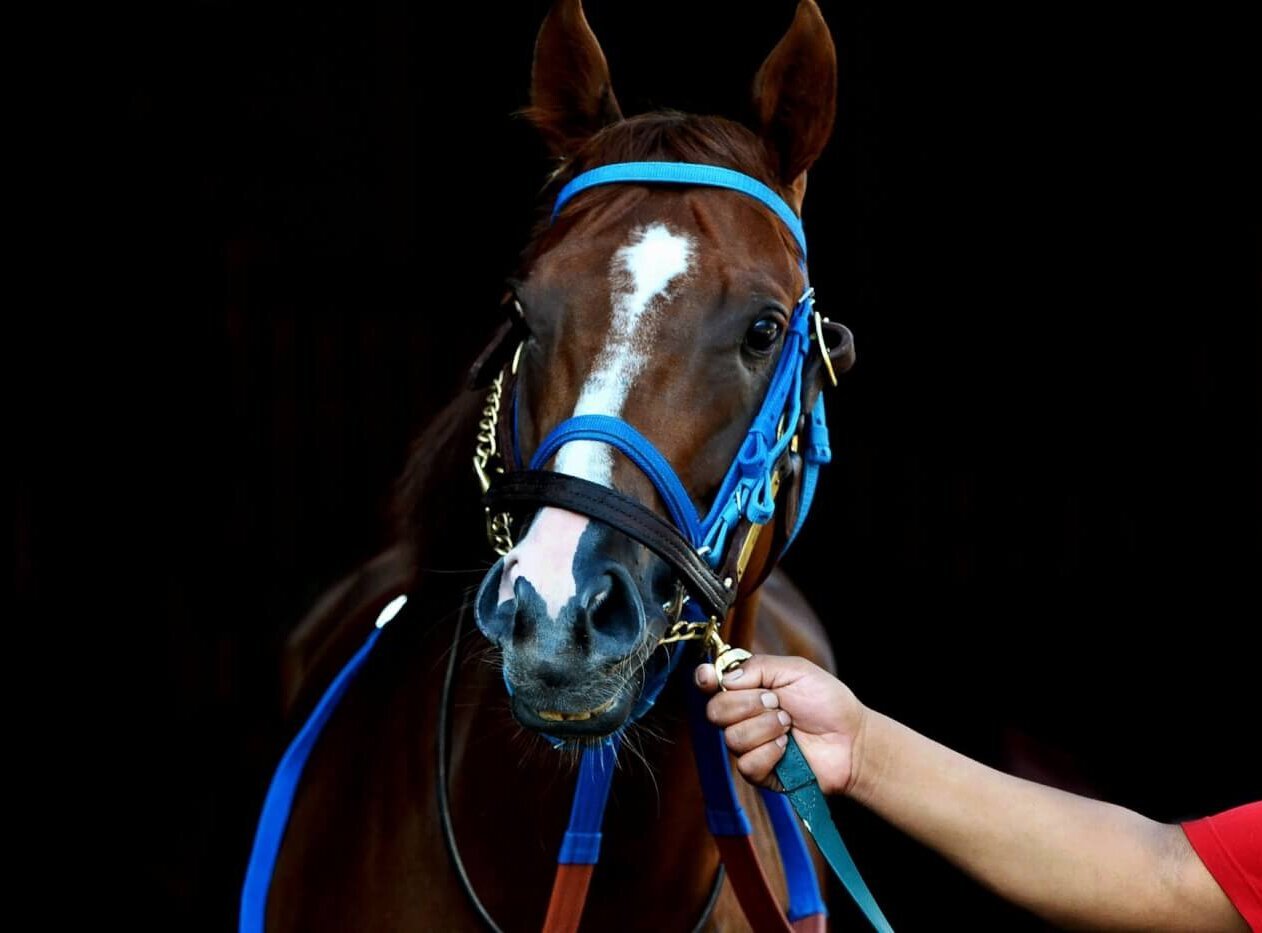
‘Idiotic Speed Tests’
Trainers and veterinarians agree that forcing fragile young horses—some of whom are still biological yearlings—to run in speed trials is dangerous and damaging. Dennis Brida, a former trainer, owner, and president of the New York Thoroughbred Breeders, called under tack shows “idiotic speed tests” and said that auctions are “butchering” these horses. Mike Repole, the billionaire owner of Repole Stables, wants to ban the “stupidity of a 1 furlong 9.3 breeze.”
Coincidentally, Repole’s horse Mo Donegal, who won the 2022 Belmont Stakes, was a half-brother to Hip #130. Both were sired by the famous stallion Uncle Mo and born the same year.
John Kimmel, a horse trainer with a veterinary degree, said, “There is no need to whip and drive them as fast as they can possibly go. It’s counterproductive to the horse physically and mentally.”
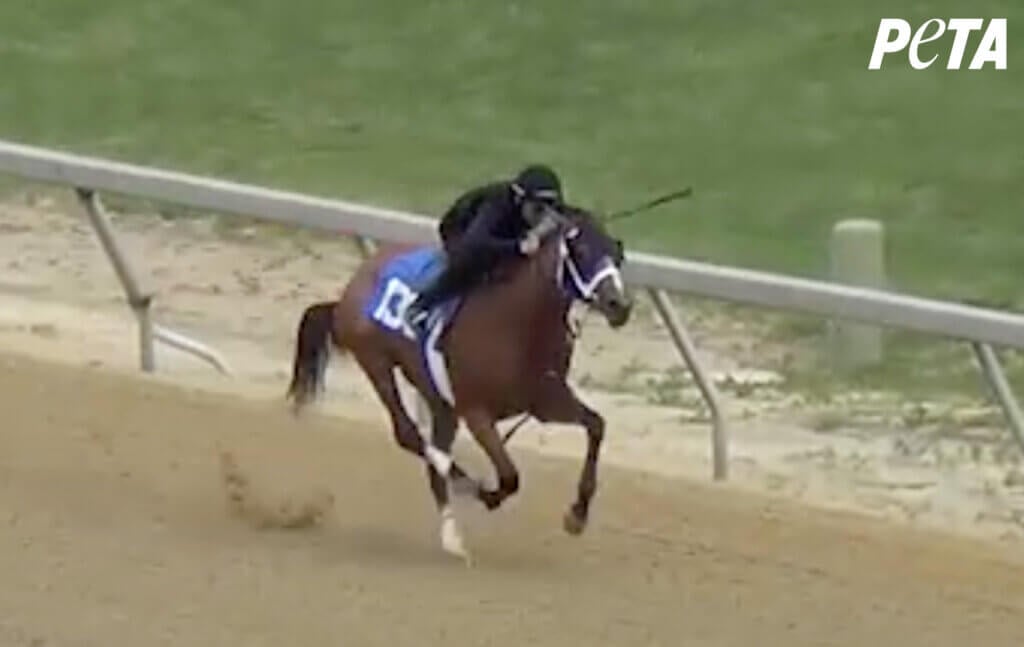
Patti Miller, vice president of the horse racing consulting company EQB, cautioned, “Overemphasis on the stop watch is oversimplification. It may be destroying the welfare of the horses showcased, hurting the livelihoods of the consignors, and ultimately, putting our venue at great risk from PETA type animal rights groups.”
PETA previously compiled video footage of injuries at under tack shows, showing how deadly these reckless sprints can be for 2-year-olds. Our investigator was able to get on the track and go behind the screen to film a horse who had suffered a fatal cardiac event while sprinting in extreme heat.
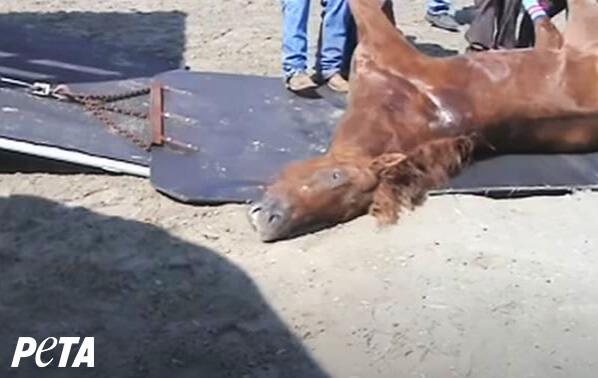
In 2023, the casualties continued to mount, including when this horse, known as “Hip #1041,” sustained a fatal rear leg injury at an Ocala Breeders’ Sales under tack show:
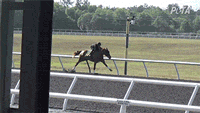
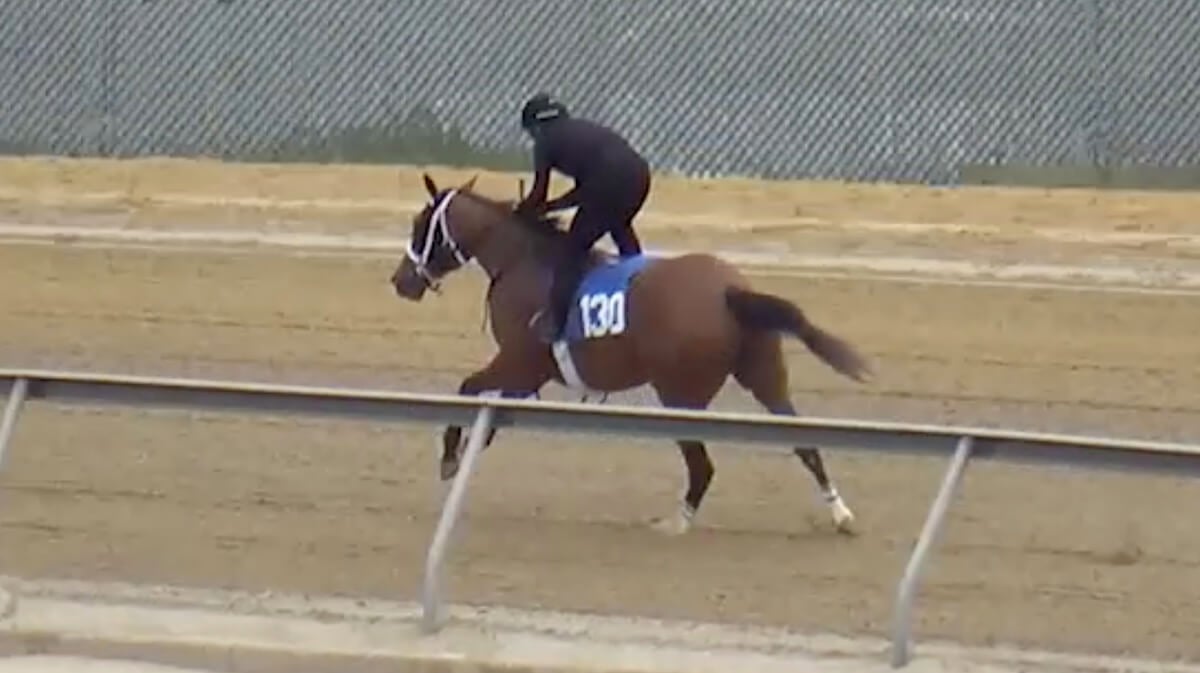
Like Middle Schoolers at an NFL Scouting Combine
Even Boyd Browning, president and CEO of Fasig-Tipton, acknowledged in 2019 that there’s too much emphasis on the clock, especially at the distance of 1 furlong: “I personally think times are overemphasized at under-tack shows …. [T]he last time I looked, we didn’t run any races at an eighth of a mile. … I don’t think [a fast time] means anything dramatic.”
Joe Clancy, editor of Mid-Atlantic Thoroughbred, asked, “No Thoroughbred will run a 10- second furlong in a race, everyone agrees on that tenet. Then why do they do it at the sales?” He then stated, “I feel pretty certain that an eighth-of-a-mile breeze is not a proven predictor of long-term success.” And consignor Niall Brennan, in the Thoroughbred Daily News, agreed:
“To make them go as fast as they can possibly go on their heads, for a furlong, has got nothing to do with what they’re going to be like as racehorses.”
These events aren’t predictive of the future success of horses, and they put horses in grave danger. Even just the training for the under tack show is detrimental to a horse’s long-term racing career—so damaging, in fact, that consigner Mark Roberts said a jockey would get fired for pushing a horse that hard in actual race training:
“What we ask them to do, they’ll never do another day in their life. … If a jock worked his horse like that in the morning—in :21 flat for a quarter or :10 flat for an eighth—they’d fire the jock.”
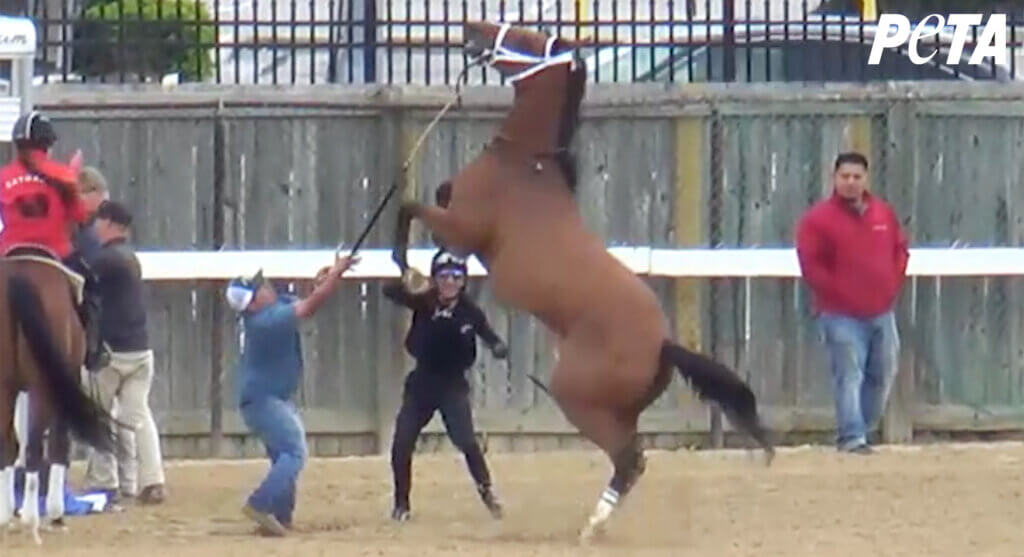
These events are as illogical and risky as sending a middle schooler to an NFL Scouting Combine. So why are they still held?
The answer is that bullet times impress gullible buyers, who salivate at the chance to buy what they think might be a Kentucky Derby contender, and the extreme speeds drive up the prices.
The consignors know that the shows are wrong but profitable. Roberts voiced his exasperation with this situation:
“It’s not like consignors wake up every day and say, ‘I want to make this horse go as fast as he can today.’ … Consignors get heat for doing it, trust me they don’t want to. But if they don’t do it, agents and owners won’t buy the horse.”
Consignor Cary Frommer echoed this sentiment: “It’s a genie we can’t put back in the bottle because it’s buyer-driven. … You can blame the consignors, but it’s 100 percent buyer-driven. Even the people who say the times are crazy line up on the fast times.”
Stakeholders understand that these reckless time trials can be destructive but believe the risk enhances the immediate bottom line. The industry hasn’t yet found a way to reconcile safety and profits. “If there’s a way out of this room,” Clancy wrote in Mid-Atlantic Thoroughbred, “nobody can really find the door just yet.”
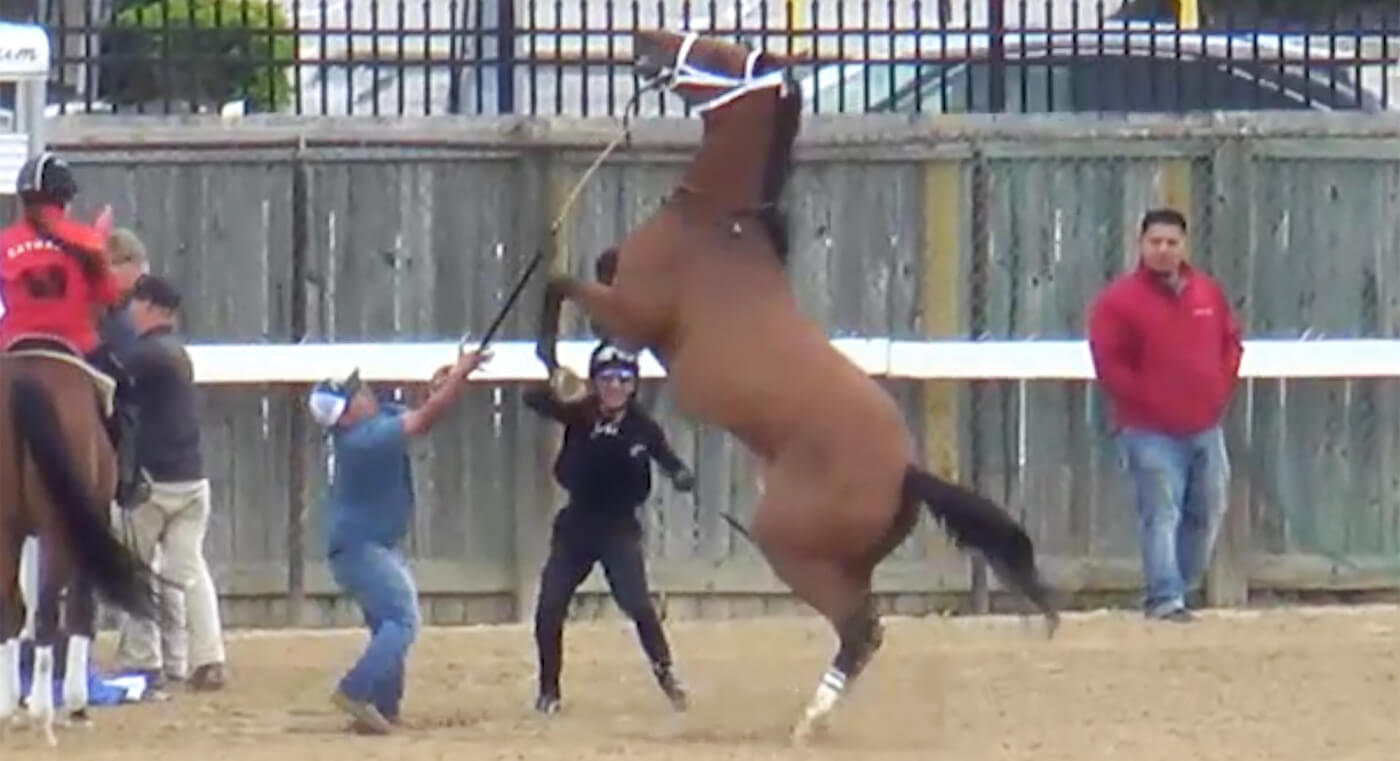
But PETA Does Have a Solution!
PETA has submitted a creative proposal to the major auction companies and top consignors, breeders, trainers, and owners. Please read the full document here:
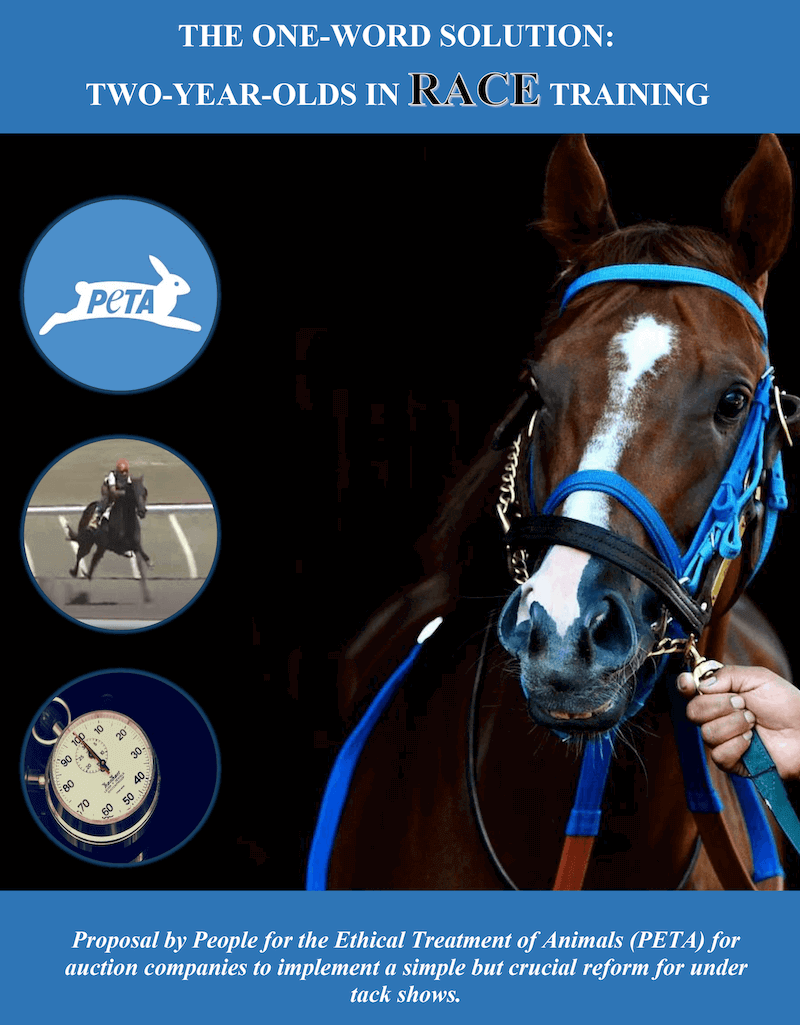
No screen is large enough to hide the countless corpses of the horses who have already been fatally injured in these events. But there is a way to reduce further carnage. What we’re offering isn’t a compromise but a solution that should appease all stakeholders—and most importantly, it would protect horses.
The proposed reform doesn’t abolish under tack shows, make them gallop-only, or even eliminate the clock. Rather, we urge that they be moved to the fall, when the juveniles are more physically developed, and that the timed breezes be run at 4-furlong and 5-furlong distances instead of the current intense sprints. These longer distances are what horses actually train at in timed morning works in preparation for races, which would give buyers the opportunity to evaluate the juveniles in a more sensible context, using a variety of metrics instead of just an eighth of a mile dragster time.
We’re recommending that auction companies begin offering these fall under tack shows in the new format on a trial basis in 2024. They would begin as a bonus option on the calendar and then transition to this new model exclusively starting in 2025.
